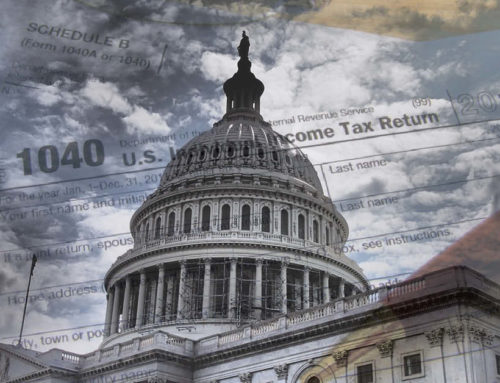The United States’ staggering $34.5 trillion debt is a testament to our persistent budgeting problem, which is exacerbated by the budget gimmicks used by both Congress and every Presidential Administration. These gimmicks, which are used to distort the true fiscal impact of legislation, include emergency spending loopholes, keeping spending off the official budget, timing gimmicks, rosy scenarios, and cherry-picking numbers to make the fiscal outlook appear more favorable than it is.
Let’s consider the President’s Fiscal Year 2025 Budget Request, which was released on Monday. While the budget proposes a 4.5% cut in discretionary spending from the previous fiscal year, this “cut” is largely nominal. The decrease is projected to come from “non-base” funds, which are outside the regular budgeting process. This includes emergency funds and accounts not funded through the General Treasury but through specific user fees.
The budget claims to reduce deficits by nearly $3 trillion over the next decade, but this projection is based on optimistic assumptions that may not materialize. For instance, it assumes the expiration of individual tax cuts from the 2017 Tax Cuts and Jobs Act (TCJA) without considering the President’s interest in extending at least some of these cuts for those earning under $400,000, which could cost $1.4 trillion over 10 years. Additionally, the budget proposes expanding the Child Tax Credit but only assumes it will continue through 2025, understating the $1 trillion long-term deficit impact if the expansion becomes permanent as most Democrats, and many Republicans, have advocated.
The White House’s FY2025 budget request generally assumes an economic growth rate far more optimistic than the nonpartisan Congressional Budget Office. This rosy economic growth projection allows the administration to calculate higher revenues and lower deficits than is realistic. Okay – every President projects miraculous economic growth in the out years as they do their budget. We don’t expect them to predict a recession, but they can at least be reasonable.
And just to reiterate, none of this is new, and the Biden White House is not alone. Congress also plays fast and loose.
Take reconciliation, which was created as part of the Congressional Budget Act of 1974. It is a legislative process to expedite passage of certain budgetary legislation in the Senate by requiring only a simple majority for passage. Reconciliation, as the name suggests, is supposed to allow for the efficient consideration of bills that align with the budget resolution’s directives, in terms of expenditures, revenues, and the federal debt limit.
Over time, the process has simply become a way to bypass a filibuster and pass legislation that ultimately increases the deficit. For example, the sweeping tax cuts enacted under Republican leadership in the early 2000s and the Affordable Care Act (ACA), commonly known as Obamacare, drafted by Democrats, were passed using reconciliation. The TCJA (which zero Democrats voted for received zero Democratic votes) and the recent Inflation Reduction Act (IRA) (which received zero Republican votes) were enacted this way as well. The Byrd Rule, named after the powerful late Senator Robert Byrd (D-WV), was established specifically to limit the use of reconciliation for provisions that do not have a direct budgetary impact, but it has not prevented the use of reconciliation for legislation that increases the deficit.
This legislative sleight-of-hand also involves the use of timing gimmicks, where lawmakers establish start- and end-dates for proposals within the 10-year budget scoring window to make them appear more fiscally responsible or to conform to legislative rules. Indeed, the TCJA tax cuts mentioned above were specifically designed to expire early within the 10-year budget window to mask the budgetary impact and allow the bill to pass with a simple majority in the Senate, under reconciliation rules. Even as it was widely expected—at the time—that the tax cuts would be extended in the future. This followed the playbook used for the tax cuts in 2001 and 2003, which were eventually made permanent for most families.
Another gimmick we have seen is the use of Changes in Mandatory Programs (CHIMPs) to create the illusion of savings to offset increases in discretionary spending. CHIMPs work by either rescinding mandatory budget authority that would not have been spent or by delaying mandatory spending from one fiscal year to the next. While these actions produce on-paper savings, they often result in no actual reduction in outlays. For example, the FY2017 omnibus appropriations bill included about $20.4 billion in CHIMPs, but only around $1 billion represented real savings, allowing lawmakers to raise spending by $19 billion without genuine offsets.
All of this distorts the fiscal landscape and perpetuates a cycle of deficit spending that threatens the economic stability of future generations. While these practices are not novel, their persistence points to a fundamental need for transparency and honesty in budgeting. Anybody can produce a budget to their liking by putting their thumb on the scales of assumptions and employing legislative sleight of hand. Real leadership requires honesty about the tough choices we need to make.










